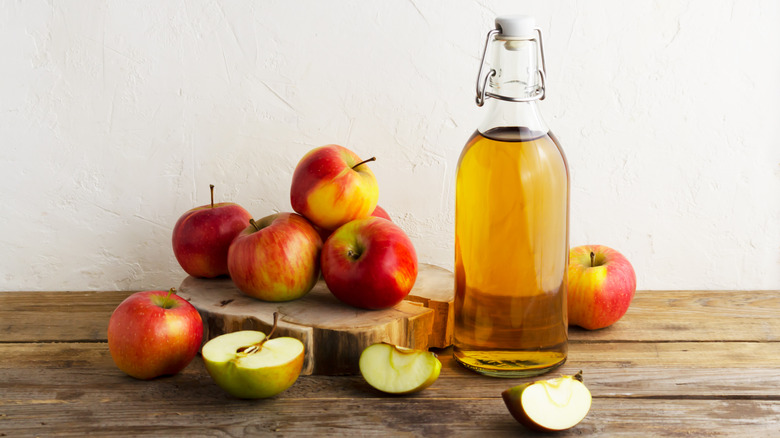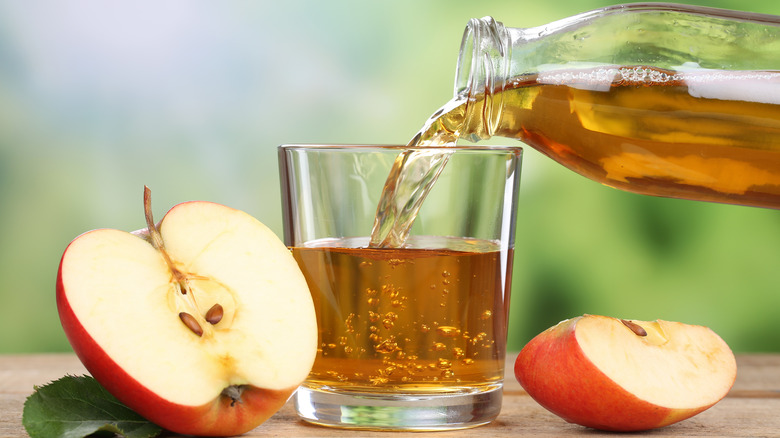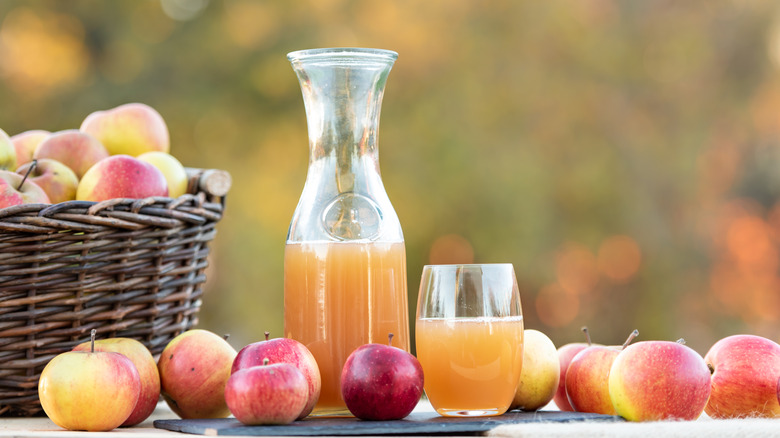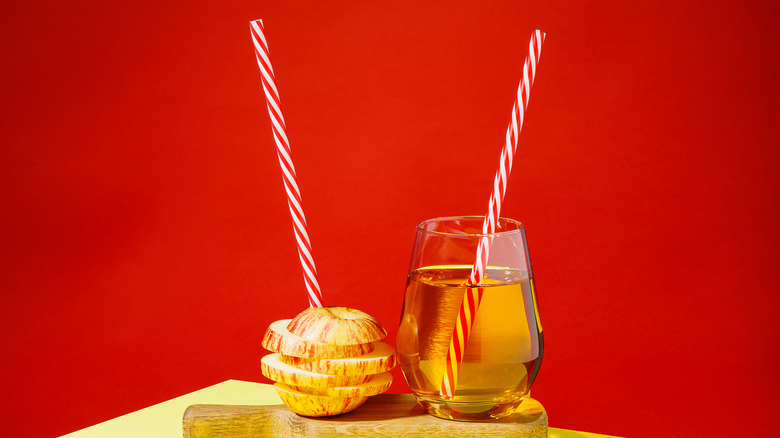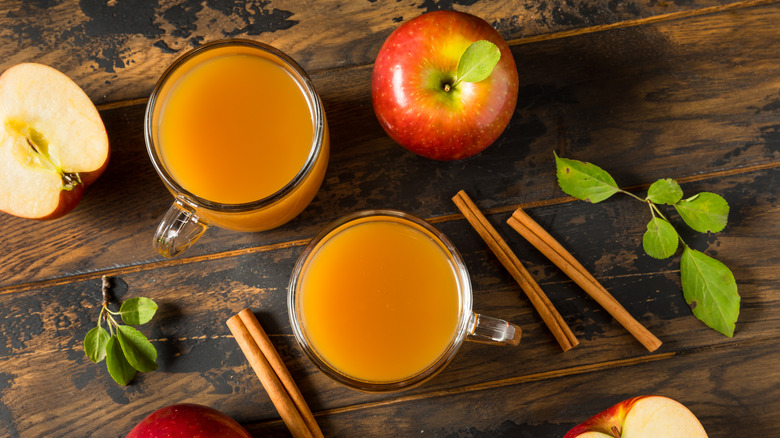What's The Difference Between Apple Cider And Apple Juice
Apple juice might bring to mind winged boxes and little straws for sipping, but the range of apple-based drinks that are now available in your local grocery store goes well beyond the elementary option. According to the United States Department of Agriculture, apples are the fruit Americans consume the most each year — including apple juice. In 2015, it was reported that Americans drank 1.6 gallons per person on average. While that doesn't include apple cider or hard cider, it certainly backs up an enduring affinity for a childhood favorite.
But, when you step into the grocery store, you might not be sure what the primary difference is between apple juice and non-alcoholic apple cider. To understand what separates them, it is important to know what techniques are used to make each as well as the ingredients used in both types of apple drinks. Once you know these basic characteristics, the differences are actually quite simple.
What to know about apple juice
Apple juice is more processed than apple cider, according to the Food Network. The reason this apple drink is more processed is because of additional steps and ingredients that are added after the apples are initially pressed. Unlike apple cider, apple juice is filtered after it has been pressed, which gives it the transparent appearance you likely expect when you pour a glass. But before apple juice can be bottled and sealed to be sold, there are a couple more things that need to be added to the pure juice.
Most apple juice that you will find in the juice aisle has had sugar or another type of sweetener added. But one key additive that sets apple juice apart from apple cider is preservatives. Because apple juice includes preservatives, it tends to have a significantly longer shelf life. According to Lacademie, pasteurized apple juice can be stored in the fridge for up to three weeks after the seal has been broken.
What is apple cider?
Apple cider must be refrigerated from the time it is made and bottled because it is not filtered or pasteurized. For that reason, its shelf life is much shorter — just seven to 10 days according to Food Network. After the bottle has been opened, Lacademie suggests using or finishing the apple cider within three days at the most.
Raw, less processed apple cider gets another signature characteristic from its lack of refinement too. Apple cider tends to have a cloudy or hazy appearance since the apple pulp has not been removed. Though the opaque liquid tends to contain more of the apple solids, it typically does not include sweeteners.
Because apple cider is made using fewer techniques and ingredients, it is a very straightforward process. To make apple cider, fresh apples are first processed raw until a mash-like consistency is achieved. It should really resemble applesauce, but in the case of apple cider, the apples have not been cooked down. Next, the applesauce-like liquid needs to be pressed through a fine mesh to strain out the majority of the solids, and voila, you have apple cider.
Nutrition of apple juice and apple cider
Apple cider has more of a certain type of healthy compound, polyphenols, that are naturally found in apples, according to the American Institute for Cancer Research. In fact, raw apple cider can have up to four times the number of polyphenols than filtered apple juice. Apparently, researchers have found evidence of these compounds potentially reducing the risk of cancer in lab studies.
Apart from the presence of more antioxidants — polyphenols — in fresh apple cider, the nutritional differences between apple cider and apple juice are negligible. Apple cider and apple juice both contain healthy vitamins and minerals such as potassium and vitamins A and C according to Souper Sage. Some apple juices have added vitamin C, giving them higher levels than apple cider.
As for the standard nutritional facts themselves, both apple cider and apple juice have 0.25 grams of protein, 0.32 grams of fat, 28 grams of carbohydrates, and 0.5 grams of fiber per cup. Both also have 24 grams of sugar per cup and 114 calories.
Ultimately, apple juice is simply more processed than apple cider, but both contain nearly identical nutritional values.
Can you substitute apple juice and apple cider?
While apple juice and apple cider may seem similar, there are some differences between the two that can affect the outcome of your recipe. If you find yourself in a situation where you need to substitute one for the other, there are a few things to keep in mind.
To substitute apple juice for apple cider, you should keep the amount of sugar in the recipe in mind. Try to use unsweetened apple juice, but if you don't have any on hand or cannot buy it, reduce the amount of sugar in the recipe. You can even try adding acid to apple juice such as lemon juice or apple cider vinegar to craft a more accurate flavor profile. But for the best results, it's important to stick to apple cider when it is called for.
Similarly, it's important to consider the more tart and tangy flavor of apple cider in place of apple juice. Other types of fruit juices such as pear juice tend to be a better match to the flavor of apple juice.
Substituting apple juice for apple cider in a recipe like an apple pie may result in a less flavorful filling that lacks the complexity of apple cider. So, it's always best to stick to the original recipe if you can. But if you need to substitute, just keep these simple tips in mind.
